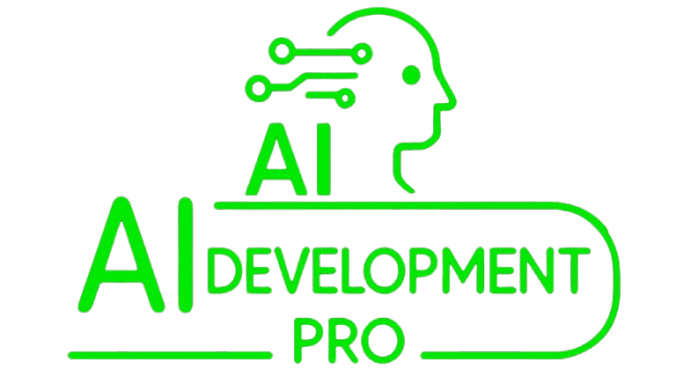

AI Backend vs Traditional Backend: Key Differences
AI Backend vs Traditional Backend: Key Differences
The rapid advancement of artificial intelligence has revolutionized backend development, introducing a new paradigm known as AI backend. While traditional backend systems rely on predefined logic and structured databases, AI backend leverages machine learning models, neural networks, and real-time data processing to deliver dynamic, intelligent solutions. Understanding the differences between these two approaches is crucial for businesses and developers aiming to stay competitive in 2025. This article explores the key distinctions, advantages, and practical applications of AI backend versus traditional backend systems.
What Is Traditional Backend?
Traditional backend systems are the backbone of most web and mobile applications, built on structured databases, APIs, and server-side logic. These systems follow predefined rules and workflows to process requests, manage data, and deliver responses. For example, an e-commerce platform using a traditional backend might rely on a relational database like MySQL to store product information and a REST API to handle user requests. The logic is deterministic, meaning the output is predictable based on the input.
Traditional backend excels in scenarios where stability, predictability, and scalability are paramount. However, it lacks the ability to adapt or learn from data without manual intervention. This limitation becomes apparent in applications requiring personalization, real-time decision-making, or complex pattern recognition-areas where AI backend shines.
What Is AI Backend?
AI backend represents a shift from rule-based systems to data-driven, adaptive architectures. Instead of relying solely on hardcoded logic, AI backend integrates machine learning models, natural language processing (NLP), and predictive analytics to automate decision-making. For instance, a recommendation engine powered by an AI backend analyzes user behavior in real time to suggest personalized content, something a traditional backend could only achieve with extensive manual tuning.
The core advantage of an AI backend is its ability to learn and improve over time. Technologies like deep learning and reinforcement learning enable these systems to handle unstructured data, such as images, voice, or text, and make context-aware decisions. Companies like Netflix and Spotify already leverage AI backend to enhance user experiences, demonstrating its potential across industries.
Performance and Scalability
Traditional backend systems are highly scalable but often require significant infrastructure adjustments to handle spikes in demand. Vertical scaling (adding more resources to a single server) or horizontal scaling (adding more servers) are common strategies. However, these approaches can be costly and inefficient for applications with unpredictable workloads.
In contrast, AI backend systems are designed for elasticity. Cloud-based AI services, such as AWS SageMaker or Google Vertex AI, automatically scale resources based on demand. Additionally, AI backend optimizes performance by predicting traffic patterns and pre-allocating resources. For example, an AI-powered chatbot can dynamically adjust its computational load based on user interactions, reducing latency and improving responsiveness.
Development and Maintenance
Developing a traditional backend involves writing extensive code for business logic, database management, and API integrations. While frameworks like Django or Spring Boot streamline this process, maintaining and updating these systems can be labor-intensive, especially as requirements evolve.
AI backend development, on the other hand, focuses on training and deploying models. Tools like TensorFlow, PyTorch, and Hugging Face simplify the creation of machine learning pipelines. However, maintaining an AI backend requires continuous monitoring and retraining to ensure accuracy. For instance, a fraud detection model must be regularly updated to adapt to new fraudulent patterns, a process known as model drift management.
Data Handling and Processing
Traditional backends rely on structured data stored in relational or NoSQL databases. Queries are executed using SQL or similar languages, and the system processes data in batches or real time based on predefined schemas. This approach works well for applications like inventory management or transaction processing.
AI backend systems, however, thrive on unstructured or semi-structured data. They use techniques like neural networks to process images, text, or sensor data without rigid schemas. For example, a healthcare app with an AI backend can analyze medical images to detect anomalies, a task impossible for traditional systems without custom-built algorithms. The ability to process and derive insights from diverse data types gives AI backend a significant edge in modern applications.
Cost Implications
Initial setup costs for traditional backend systems are generally lower, as they use established technologies and require less specialized expertise. However, long-term costs can escalate due to manual updates, scaling challenges, and maintenance overhead.
AI backend systems often have higher upfront costs due to the need for data scientists, ML engineers, and specialized infrastructure. However, they can reduce operational costs over time by automating tasks like customer support (via chatbots) or predictive maintenance (in manufacturing). Businesses must weigh these factors when deciding between the two approaches.
Security Considerations
Traditional backend systems benefit from decades of security best practices, including encryption, authentication, and regular audits. Vulnerabilities are well-understood, and mitigation strategies are widely documented.
AI backend introduces new security challenges, such as adversarial attacks on machine learning models or data poisoning. Ensuring the integrity of training data and implementing robust model governance are critical. For example, an AI backend handling financial transactions must be safeguarded against manipulation to prevent fraudulent outcomes.
Practical Tips for Choosing Between AI and Traditional Backend
For businesses evaluating backend solutions, consider the following:
- Use traditional backend for applications with stable, predictable requirements, such as CRM systems or basic e-commerce platforms.
- Opt for AI backend if your application requires personalization, real-time analytics, or complex data processing, like voice assistants or autonomous systems.
- Hybrid approaches are also viable. For instance, a retail app might use a traditional backend for inventory management and an AI backend for personalized recommendations.
Support our work by sharing on multiple social platforms. Join our community







